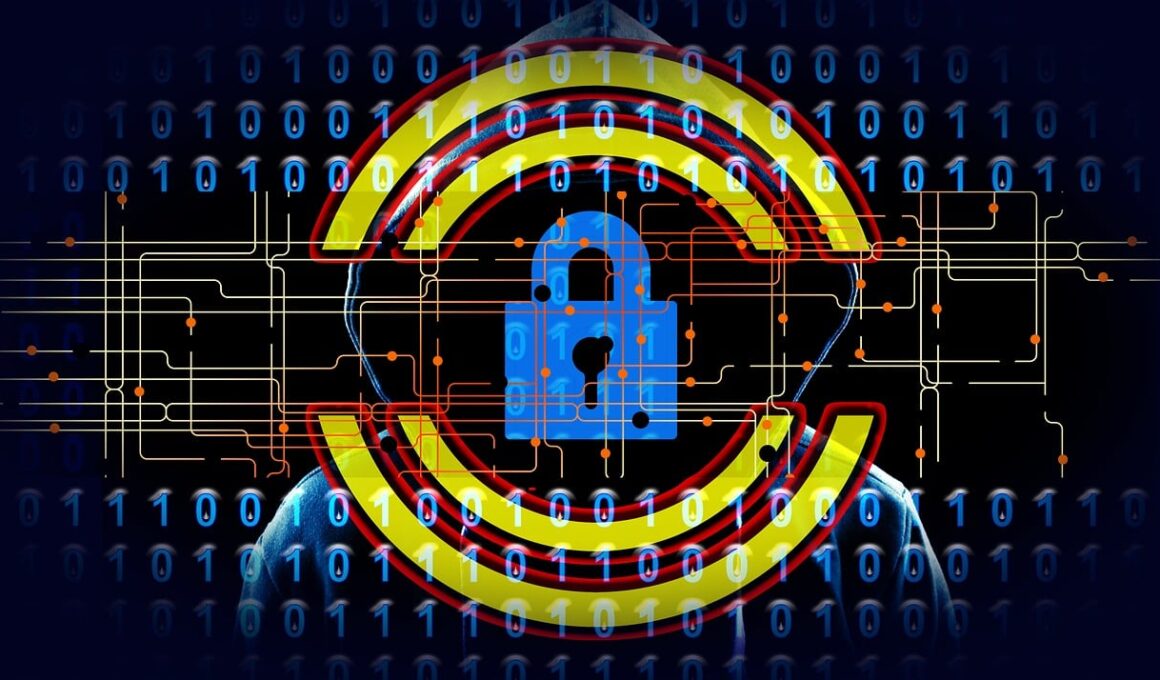Ensuring Data Integrity through Robust Internal Controls
Data integrity is crucial for any organization aiming to maintain accuracy and consistency in its financial reporting. Establishing strong internal controls helps in safeguarding sensitive information and reduces the risk of errors and fraud. Implementing an effective internal control framework protects against unauthorized access and ensures only legitimate users have access to the data. One way to achieve this is through segregation of duties, which prevents any single individual from controlling multiple phases of a financial transaction. This minimizes the potential for misappropriation and ensures accountability within the organization. Regular audits and monitoring facilitate the detection of anomalies that could indicate potential breaches. Moreover, organizations should focus on continuous training and awareness programs to educate employees about the importance of data integrity. Transparent communication plays a pivotal role in fostering a culture of integrity, motivating employees to adhere to established policies and procedures. Furthermore, utilizing technology such as encryption and access control systems enhances security. By implementing these internal control strategies, companies can protect their data assets, making sure they preserve trust and compliance with regulatory requirements across all operations.
Beyond implementing segregation of duties, organizations should invest in automated systems to enhance the efficiency of internal controls. These systems streamline processes and provide real-time monitoring of transactions, allowing for immediate identification of discrepancies or issues. Automation reduces the risk of human error, all while increasing the overall effectiveness of the internal control framework. Organizations must also ensure adequate data backup solutions are in place, which serve as a safety net in case of data breaches or system failures. Regularly reviewing and updating these backup procedures guarantees that data is recovered accurately and quickly if needed. Additionally, businesses should enforce a robust access control policy, specifying user privileges based on roles, thus limiting access to sensitive data to authorized personnel only. This is vital in minimizing the risk of intentional or accidental data manipulation. Incorporating a feedback mechanism is equally crucial, allowing staff to report control weaknesses or potential improvements. Such open dialogue can foster innovation within the control processes. Finally, by establishing performance metrics, organizations can monitor the effectiveness of their internal controls, adjusting strategies as needed for optimal data integrity.
The Role of Technology in Internal Controls
Technology plays a transformative role in enhancing the effectiveness of internal controls within corporate finance. Implementing advanced software solutions can provide organizations with analytic tools that foster better decision-making and risk assessment. Data analytics enables finance teams to sift through vast amounts of information quickly, uncovering trends and anomalies that may jeopardize data integrity. By harnessing business intelligence platforms, managers can gain insights into processes and identify areas requiring additional attention or modification in control measures. Moreover, integrating cloud-based solutions provides organizations with enhanced security that protects sensitive financial data while ensuring easy access from various locations. Regular software updates are critical for combating emerging cybersecurity threats that could compromise data integrity. Organizations must adopt multi-factor authentication to verify identities, adding an extra layer of security against unauthorized access. Furthermore, machine learning algorithms can predict potential fraud risks by recognizing patterns in historical transaction data. These technologies not only bolster internal controls but also support compliance with regulations mandating stringent data protection practices. Emphasizing technology as a fundamental pillar of internal controls ultimately strengthens organizational resilience against data integrity risks.
Another significant aspect to consider is the continuous monitoring of internal controls, which ensures their effectiveness and relevance. Organizations must establish clear policies for reviewing and assessing control measures regularly. This can include internal audits, where teams gather data on the performance of the controls and suggest improvements. Documenting any changes made and how they impact operations is essential to maintain transparency and accountability. Additionally, fostering a culture of compliance and ethical behavior within the organization enhances the soundness of internal controls. Educating employees on regulations and compliance standards can raise awareness about the importance of integrity in financial practices. When employees understand the rationale behind internal controls, they are more likely to adhere to policies and procedures. Creating a risk assessment framework enables organizations to prioritize their efforts based on identified risks associated with data management. By effectively managing these risks, organizations can not only safeguard their financial information but also build trust with stakeholders. Ultimately, a well-rounded commitment to enhancing internal controls leads to long-term organizational success and prosperity, reinforcing stability in the face of an ever-changing business environment.
Best Practices for Implementing Internal Controls
Establishing best practices for internal controls is essential for ensuring data integrity within an organization. One such practice is to engage key stakeholders during the design of the control framework. Involving stakeholders across departments fosters cooperation and understanding of necessary controls, resulting in a more holistic approach. Regular training sessions are vital to keep employees informed about their roles in maintaining data integrity. Staff should be equipped with the necessary skills to identify discrepancies and to follow reporting procedures. Additionally, organizations must create a clear documentation process, detailing each control’s purpose and operation. This documentation serves as a reference for both current employees and new hires, reinforcing the significance of maintaining internal controls. Another recommended practice is to implement a whistleblower policy that encourages employees to report suspicious activities without fear of retaliation. This can be an effective way to identify potential weaknesses within internal controls early. Ultimately, establishing a system of rewards for compliance can motivate employees to take ownership of internal controls, reflecting the organization’s commitment to integrity and ethical practices while fostering a responsible corporate culture.
Furthermore, organizations must proactively adapt their internal controls to reflect changes in the business environment, regulatory landscape, or industry practices. Regular assessments help identify control areas that may need enhancement or modification, especially concerning emerging risks. Keeping abreast of IT developments, such as innovative cybersecurity measures, prepares organizations to withstand potential threats. Companies should embrace flexibility in their controls while ensuring compliance with established regulations. Engaging third-party auditors may also provide valuable insights into areas of concern or improvement in the internal control system. They can audit processes objectively, identifying risks and recommending actionable solutions. Transparency in such evaluations fosters trust and accountability within the organization. Additionally, businesses should leverage technology to facilitate real-time data sharing and collaboration among teams, ensuring that critical information is managed efficiently. Such collaborative efforts can strengthen the effectiveness of internal controls by promoting a sense of shared responsibility among employees. Adopting an agile approach to oversight and control implementation ultimately creates a robust framework that supports long-term data integrity and organizational resilience.
Conclusion: The Importance of Consistent Review
In conclusion, ensuring data integrity through robust internal controls is integral to maintaining trust with stakeholders and fulfilling legal obligations. Organizations must recognize that internal controls are not a one-time setup but require continuous review and refinement. Implementing a cyclical evaluation process allows businesses to remain attuned to potential weaknesses or threats. Revisiting training programs and communication strategies regularly reinforces the importance of employee engagement in these controls. Strong internal controls create a framework that encompasses security, ethics, and compliance. They safeguard not just data but also the organization’s reputation and longevity in a competitive business landscape. Furthermore, establishing a culture of accountability and transparency will encourage employees to embrace their roles in protecting data. As organizations continue to navigate complex financial environments, leveraging best practices and technological advancements in internal controls becomes paramount. The commitment to enhancing internal controls leads to a sustainable competitive advantage while securing sensitive data and fostering stakeholder trust. Thus, executives and management must prioritize these strategies to ensure a robust framework that supports enduring data integrity and organizational stability.
In summary, building robust internal controls is an ongoing process that encompasses strategic planning, stakeholder engagement, and the implementation of best practices. Organizations must proactively seek areas for improvement, utilizing a combination of technology and human expertise. By cultivating a culture centered around integrity and compliance, businesses are better prepared to navigate challenges while safeguarding data. Ensuring data integrity is not just a regulatory requirement; it is also a cornerstone of responsible corporate governance and sustainable growth. A well-structured internal control framework allows organizations to mitigate risks effectively, protect their resources, and enhance decision-making processes. As companies embrace change and innovation within their financial systems, they must remain vigilant about the potential risks that accompany those advancements. By adopting a proactive stance toward internal controls, organizations can foster resilience and adaptability, positioning themselves as leaders in their respective industries. Ultimately, a commitment to data integrity through internal controls will contribute to long-term organizational success, instilling confidence among stakeholders and ensuring compliance with ever-evolving regulations. Emphasizing these practices cements the foundation for a transparent and accountable corporate environment.


